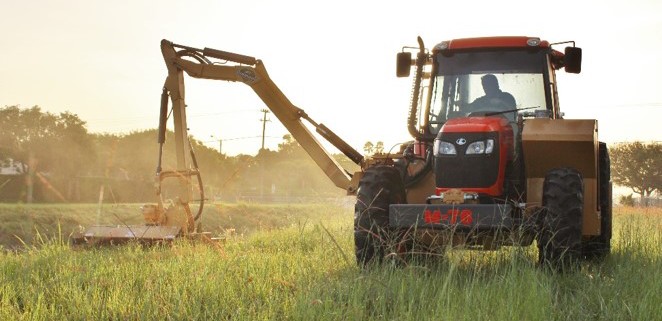What Is Meant by a “Well-Maintained” Canal?
The Lake Worth Drainage District’s canals exist for the purposes of flood control and water supply. Through its network of over 500 miles of drainage canals, the District provides stormwater management making the area suitable for residents, businesses and agriculture. Effective flood control is dependent on well-maintained canals and rights-of-way. But what defines “well-maintained”? A canal or right-of-way that some property owners may consider an eyesore is often considered well-maintained for effective flood control operations of the District.
Some of the necessary components for effective flood control include the free flow of water in the canal channel to divert excess stormwater from properties, and unencumbered canal rights-of-way to provide access for regular maintenance and emergency response. Through the process of aquatic vegetation removal and canal bank mowing, effective flood control is achieved.
There are numerous species of aquatic plants found within the District’s canal system. Some aquatic vegetation has the potential to slow the flow of water within the canal channel or large flood control structures. The Lake Worth Drainage District staff controls aquatic vegetation growth with the application of herbicides and mechanical removal. Although not esthetically pleasing to some property owners, algae in canals is not a threat to flood control. Because algae are very small plants that break apart easily, they can pass through drainage pipes and control structures. This is good news since the herbicide used to treat algae can be harmful to the water body.
Canal rights-of-way and banks are mowed approximately four (4) times a year. Flat-mowers mow the rights-of-way, and arm-mowers maintain the side slopes of the canals. High grass does not prevent access to canals and control structures or threaten flood control operations. Grasses and other vegetation can grow several inches in height before mowing crews return to an area. Since these areas are not fertilized or irrigated, a quarterly mowing schedule allows for the seeding and regrowth of grasses.
Although most property lines do not extend to the water’s edge, some property owners adjacent to the right-of-way may choose to maintain the grass to a higher degree through irrigation and more frequent mowing. However, this higher degree of maintenance is at their cost and no encroachments such as trees or shrubs are allowed.
Flood control and the maintenance it requires comes at a cost. All property owners within the Lake Worth Drainage District boundary, whether adjacent to a canal or miles away, are assessed at the same tax rate base on the amount of land owned. In 2019, the non-ad valorem assessment rate is $49.50 for a parcel equal to or less than an acre in size and is established by the Board of Supervisors. By providing well-maintained canal rights-of-way necessary for flood control operations, the Lake Worth Drainage District can achieve its mission of effective flood control at an affordable cost for all residents.




